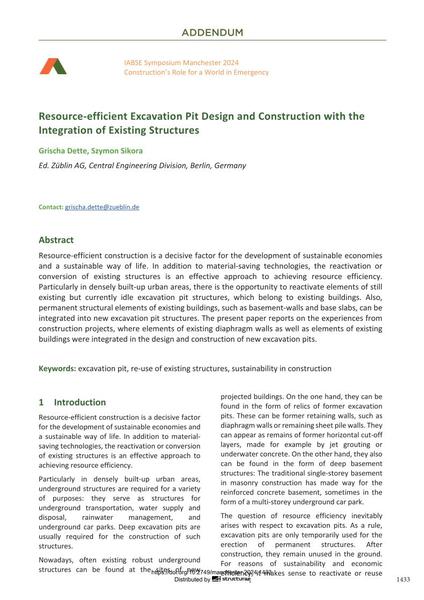Resource-efficient Excavation Pit Design and Construction with the Integration of Existing Structures

|
|
|||||||||||
Bibliographic Details
| Author(s): |
Grischa Dette
(Ed. Züblin AG, Central Engineering Division, Berlin, Germany)
Szymon Sikora (Ed. Züblin AG, Central Engineering Division, Berlin, Germany) |
||||
|---|---|---|---|---|---|
| Medium: | conference paper | ||||
| Language(s): | English | ||||
| Conference: | IABSE Symposium: Construction’s Role for a World in Emergency, Manchester, United Kingdom, 10-14 April 2024 | ||||
| Published in: | IABSE Symposium Manchester 2024 | ||||
|
|||||
| Page(s): | 1433-1443 | ||||
| Total no. of pages: | 11 | ||||
| DOI: | 10.2749/manchester.2024.1433 | ||||
| Abstract: |
Resource-efficient construction is a decisive factor for the development of sustainable economies and a sustainable way of life. In addition to material-saving technologies, the reactivation or conversion of existing structures is an effective approach to achieving resource efficiency. Particularly in densely built-up urban areas, there is the opportunity to reactivate elements of still existing but currently idle excavation pit structures, which belong to existing buildings. Also, permanent structural elements of existing buildings, such as basement-walls and base slabs, can be integrated into new excavation pit structures. The present paper reports on the experiences from construction projects, where elements of existing diaphragm walls as well as elements of existing buildings were integrated in the design and construction of new excavation pits. |
||||
| Keywords: |
excavation pit re-use of existing structures sustainability in construction
|
||||
